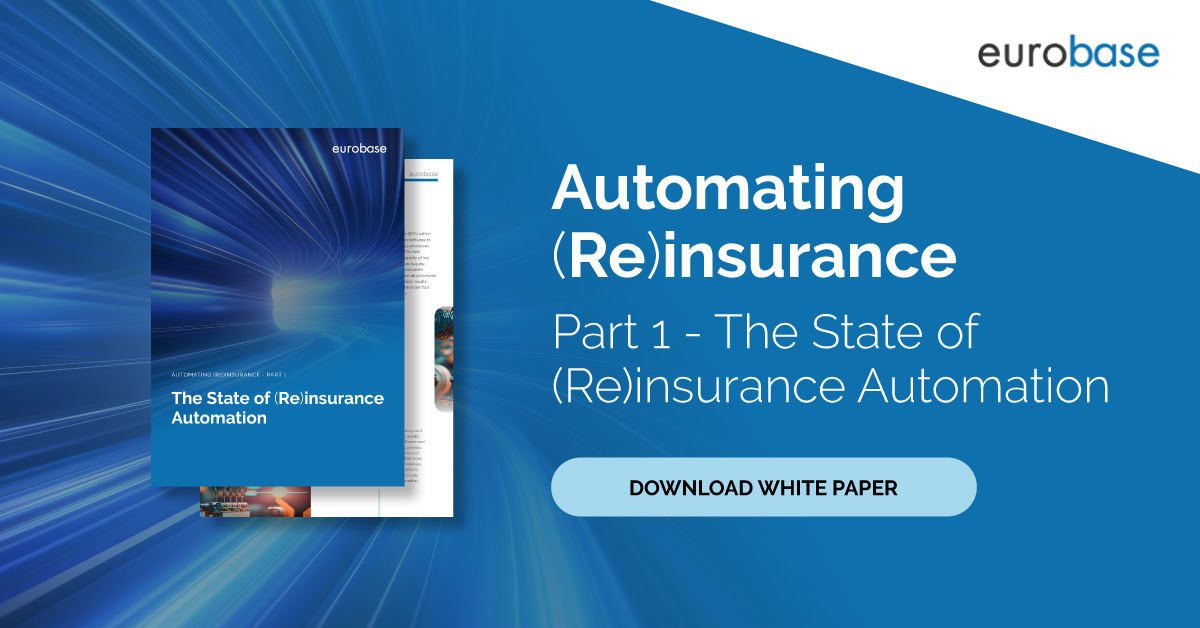Automation is a game-changer for (re)insurers when it serves clear objectives. From driving operational efficiencies to delivering touch-free customer experiences, automation is playing an ever-increasing role in both personal and commercial lines.
Automation also has a key role to play in realising the visions of market initiatives like Lloyd’s Blueprint Two and ACORD’s Rushlikon Initiative by enabling data to flow consistently and seamlessly between (re)insurers and brokers – speeding up transactions, enabling better decision-making and benefiting the end customer.
However, automation for its own sake does not automatically bring success. In fact, many (re)insurers’ investments in automation have delivered disappointing results. So how do you ensure automation delivers real value?
Here are three core areas in which automation can deliver transformative benefits for (re)insurers – and the key considerations to take before getting started.
1. Data entry
AI can bring a host of benefits from the first moment data is captured – from validation to fraud identification, reducing errors and omissions and ensuring trusted information flows through the (re)insurance process.
However, not all data entry needs to be automated. Automation works best with structured, quantitative, verified data. Does the data in question warrant being structured or can it be retained as background information?
If the data has a material impact on business decisions or your ability to serve customers quickly and efficiently, the cost of implementing automation is probably justified. And if multiple business processes make use of this information, structuring it could save time and money across the organisation.
It is also important to consider the potential benefits of structuring data to enable data exchange with trading partners, regulators and other stakeholders.
2. Data exchange
Once the business has well-structured, reliable data, value is leveraged by creating a single source of truth – a shared dataset which enables internal and external systems to connect and communicate seamlessly through a shared workflow.
Enabling teams to access the same data in real-time enhances decision-making throughout the organisation and lays the platform for game-changing analytics.
Automated workflows must, however, be designed to co-exist with and enable an orderly phase-out of legacy systems or they may create unnecessary work.
When sharing data with external counterparties, trust and compatibility are key. As well as ensuring the right level of granularity in the data to deliver onward value, it should comply with ACORD standards to enable simple integration with the maximum number of trading partners and market systems. All parties must also have a clear understanding from the outset of how the data is validated and who owns it if an error is detected.
3. Customer interaction
Automation is often deployed to enhance the customer experience, so it should be designed ‘customer first’ rather than ‘technology first’ – envisage the customer experience you want to deliver and work backwards from there.
However, AI cannot fully replicate human service, intuition or empathy. A balance must be struck between the speed and efficiency of straight-through processing with the necessity for personalised service and support when customers need it. Insurance is, after all, still a relationship business.
The crux
Across all three areas it is vital to set clear objectives – identify which processes and workflows can be automated and where automated data exchange would bring the business the biggest benefits.
When considering the scope of automation work, ensure you calculate the expected return on investment. Automation may not always be more cost-effective than continuing to complete a task manually. The impact of automating processes will have on staff should also be considered in this analysis.
Take a staged approach to implementation to avoid over-commitment. Once benefits have been proven, maximise returns in one area before expanding into the next.
As more processes are considered for automation, engaging with a partner who has real domain knowledge of the (re)insurance sector, deep understanding of technology and asks the right questions is key to avoiding costly mistakes and maximising competitive advantages.
For more on this topic, check out our white paper, ‘Automating (Re)insurance - The State of (Re)insurance Automation’, which you can access here.
